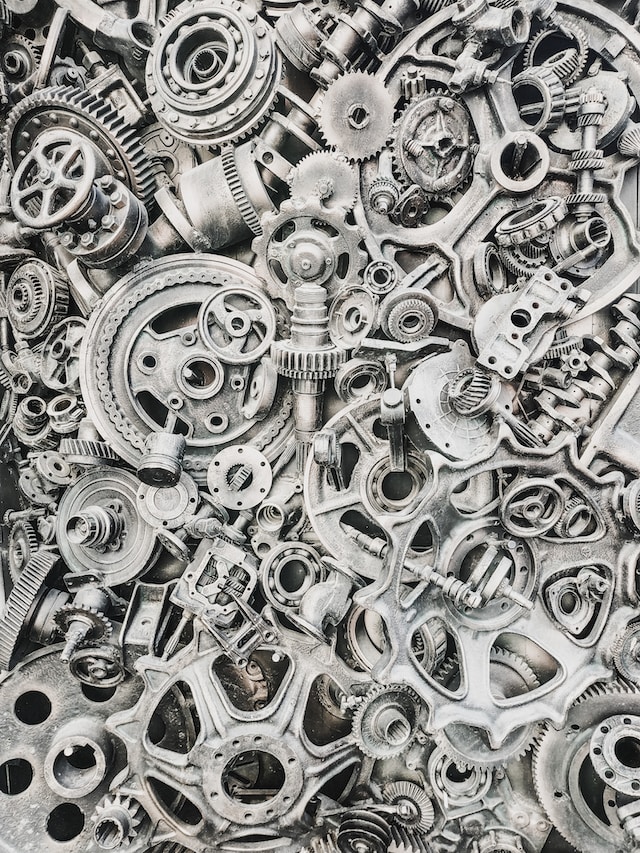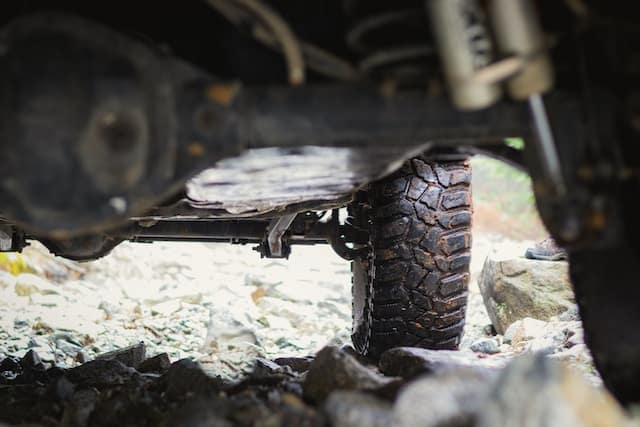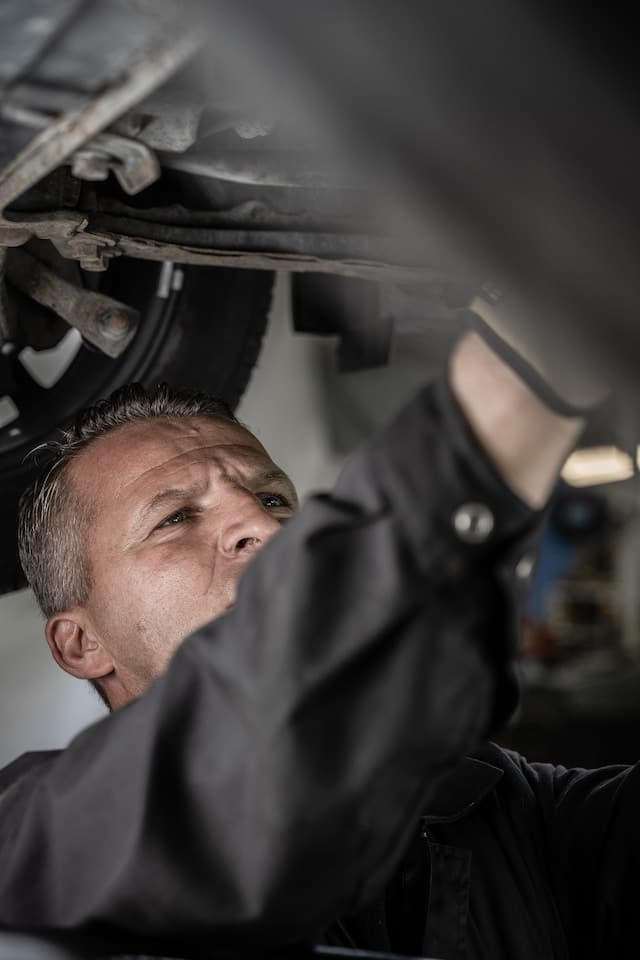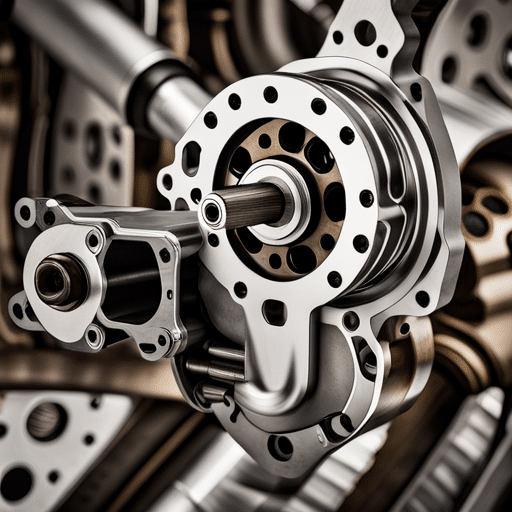
“Is transfer case same as transmission?” This question often arises among car owners and enthusiasts. In this article, we delve into the mechanics of a vehicle to explore the similarities and differences between these two critical components: the transfer case and the transmission. By understanding these elements better, you can enhance your knowledge of your vehicle’s inner workings and make informed decisions when it comes to maintenance and repairs.
[lasso id=”5526″ link_id=”2442″ ref=”amzn-valvoline-multi-vehicle-tcf-conventional-transfer-case-fluid-1-qt” sitestripe=”true”]Is Transfer Case Same as Transmission? Understanding the Basics
The transmission and the transfer case are two separate but interrelated components of a vehicle’s drivetrain system. The transmission’s role is to transmit the engine’s power to the drive axle, using different gear ratios to provide the right amount of power and speed depending on the driver’s needs. In contrast, the transfer case, a feature of four-wheel-drive and all-wheel-drive vehicles, distributes power from the engine to both the front and rear axles.
[lasso id=”5526″ link_id=”2443″ ref=”amzn-valvoline-multi-vehicle-tcf-conventional-transfer-case-fluid-1-qt” sitestripe=”true”]The Transmission: A Closer Look
The transmission is a complex mechanical system that utilizes gears and a clutch to convert the engine’s power into torque. It then uses this torque to move the vehicle and carry load, while keeping the engine within an optimal RPM (Revolutions per Minute) range. There are several types of transmissions, including manual, automatic, and continuously variable transmission (CVT), each with its own set of advantages and operational methods.
Manual transmissions require direct driver involvement to shift gears, while automatic transmissions perform gear shifting autonomously based on the vehicle’s speed and load. A CVT, on the other hand, provides a seamless range of gear ratios, offering more efficient performance.
The Transfer Case: A Detailed Overview
Unlike the transmission, the transfer case is not involved in changing gears or providing power to the wheels. Its function is primarily in vehicles with 4WD or AWD systems. The transfer case receives rotational power from the transmission and splits it between the front and rear axles. This allows for a balanced drive and better traction, particularly useful in off-road or challenging driving conditions.
There are different types of transfer cases, including part-time, full-time, and active systems, which offer varying levels of control to the driver in managing power distribution.
Comparing the Transfer Case and Transmission

The transmission and the transfer case are similar in the sense that they both play pivotal roles in power distribution. However, their functions are quite distinct. While the transmission’s purpose is to manage the application of power to the wheels, the transfer case’s primary role is to distribute that power between front and rear axles in 4WD and AWD vehicles.
Interrelationship Between the Transfer Case and Transmission
While the transfer case and transmission serve different functions, they work closely together in a vehicle’s drivetrain. The transmission outputs power, which the transfer case then splits appropriately between the front and rear wheels in certain types of vehicles. This interrelationship makes it vital for these components to function flawlessly together for optimal vehicle performance.
Regular maintenance of both the transmission and the transfer case is important to keep them working in harmony and to avoid potentially costly repairs. Regular checks can help detect leaks, wear and tear, or other issues early, before they become major problems.
So, is the transfer case the same as the transmission? The answer is no, they are distinct components serving unique roles in your vehicle’s drivetrain. However, they work together to provide a smooth, efficient driving experience. Understanding how these parts operate and interact contributes significantly to vehicle literacy, and ultimately, to your vehicle’s longevity and performance.
[lasso id=”5526″ link_id=”2444″ ref=”amzn-valvoline-multi-vehicle-tcf-conventional-transfer-case-fluid-1-qt” sitestripe=”true”]What Causes a Transfer Case to Fail? Understanding the Common Reasons

Several factors can cause a transfer case to go bad, and they range from normal wear and tear to poor maintenance and external damage. Here are some common causes:
- Lack of Maintenance: Skipping regular fluid changes can lead to poor lubrication and ultimately, failure of the transfer case.
- Poor Quality Fluid: Using the wrong type or poor quality transfer case fluid can accelerate wear and tear.
- Mechanical Stress: Heavy-duty usage, such as frequent off-roading or towing, can place added stress on the transfer case, leading to potential failure.
- Seal Leaks: Over time, the seals keeping the lubricating fluids inside can wear out, leading to leaks and reduced lubrication.
- Worn Bearings or Bushings: These can cause misalignment or imbalance in the system, causing it to wear out faster.
- Gearing Problems: Broken or worn gears within the transfer case can result in mechanical failure.
- Chain Stretch: In chain-driven transfer cases, the chain can stretch over time, leading to slippage and eventual failure.
- Electrical Issues: Modern transfer cases often have electronic components that can fail, affecting the proper functioning of the case.
- External Damage: Physical damage from road hazards or accidents can directly impair the transfer case.
- Age: Like all automotive components, transfer cases have a finite lifespan and can degrade with time, even with proper maintenance.
If you suspect your transfer case is going bad, it’s crucial to consult a qualified mechanic for a proper diagnosis and repair to prevent further damage to your vehicle’s drivetrain.
What Causes a Transmission to Fail? Understanding the Common Reasons
Several factors can lead to transmission failure, ranging from neglect and misuse to simple wear and tear. Here are some common reasons:
- Lack of Maintenance: Infrequent fluid changes or using the wrong type of transmission fluid can lead to premature failure.
- Overheating: Excessive heat can break down transmission fluid, causing internal damage to the gearbox.
- Worn Clutch: In manual transmissions, a worn clutch can lead to incomplete gear engagement, causing damage over time.
- Bad Torque Converter: For automatic transmissions, a faulty torque converter can lead to overheating and inefficient power transfer, damaging the transmission.
- Solenoid Issues: Malfunctioning solenoids can cause incorrect fluid flow, leading to overheating or gear slippage.
- Fluid Leaks: Loss of transmission fluid due to leaks can result in inadequate lubrication and cooling, accelerating wear and tear.
- Mechanical Errors: Broken or worn-out gears can cause mechanical failures, impeding the transmission’s ability to shift properly.
- Electronic Failures: Modern transmissions rely on electronic systems; failure of these components can affect shifting patterns and overall performance.
- Heavy Towing or Overloading: Excessive load can put too much stress on the transmission, causing it to overheat and fail.
- Age: Older transmissions may simply wear out over time, even with proper maintenance.
If your transmission shows signs of failing, it’s imperative to consult a qualified mechanic immediately for a proper diagnosis and repair plan to prevent further damage to your vehicle.
Is Transfer Case Same as Transmission? FAQs

Q: Is the transfer case part of the transmission?
A: No, the transfer case is not part of the transmission. While it works in conjunction with the transmission, it is a separate component of a vehicle’s drivetrain. Its function is to transfer the power from the transmission to both front and rear drive axles.
Q: What does a transfer case do?
A: The transfer case is a component of the drivetrain in four-wheel drive, all-wheel drive, and other multiple powered axle vehicles. It transfers power from the transmission to the front and rear axles via the driveshaft. Furthermore, the transfer case synchronizes the difference between the rotation of the front and rear wheels, providing balanced drive and better traction.
Q: Can a transfer case be repaired instead of replaced?
A: Yes, depending on the nature of the problem with your transfer case, it may be possible to repair it instead of replacing it. Repairing the transfer case can be a less costly option. However, it’s crucial to determine if the issue lies with the transfer case or the transmission to ensure the correct repairs are made.
Q: What are the symptoms of a bad transfer case?
A: Symptoms of a bad transfer case depend on the condition of the driveline component. These can include a complete loss of four-wheel or all-wheel drive, inability to switch back to regular two-wheel drive from four-wheel drive, strange noises when turning, and a “Service 4WD” sign being illuminated.
Q: Can you drive with a bad transfer case?
A: Driving with a bad transfer case is not advisable. If the transfer case is malfunctioning, it could result in breaking either the driveshaft or axle shafts, potentially causing serious damage to your vehicle.
Q: What happens when a transfer case goes bad?
A: Depending on the specific vehicle, the symptoms of a failing transfer case can vary. In some cases, the front driveshaft may continually rotate, while in others it may not rotate at all until the 4WD is engaged. Eventually, the vehicle will become inoperative if the transfer case fails completely.
Q: What’s the difference between a bad transfer case and a bad transmission?
A: Both a failing transfer case and transmission can cause issues with gear shifting. However, a common sign of a bad transfer case includes difficulties with switching between two-wheel and four-wheel drive, while a bad transmission often presents problems with shifting up or down gears. If your vehicle exhibits these issues, a certified mechanic should be contacted for a proper diagnosis.
Q: What is a differential and how does it relate to a transfer case?
A: A differential is a device that splits torque between the wheels of the same axle, allowing them to rotate at different speeds, which is crucial during turns. This is similar to a transfer case in that both distribute power, but while a differential works on the same axle, a transfer case distributes power between two axles.
Q: Can a leaking transfer case still function properly?
A: If your transfer case is leaking fluid, it can lead to insufficient lubrication and potential damage. While it may still function for a time, the performance can be severely affected and can lead to more serious mechanical problems. It’s recommended to have a leaking transfer case fixed as soon as possible to prevent further damage.
Q: Is a transfer case necessary for all vehicles?
A: No, a transfer case is not necessary for all vehicles. It is mainly found in vehicles with multiple powered axles like four-wheel drive (4WD) and all-wheel drive (AWD) systems. Vehicles with two-wheel drive do not have a transfer case.
Q: What causes a transfer case to fail?
A: There are several causes of transfer case failure, including lack of maintenance, fluid leaks, use of incorrect fluid type, excessive off-road or towing use, and general wear and tear. Regular service can help prevent many of these issues.
Q: How often should a transfer case be serviced?
A: It’s recommended to service your transfer case about every 30,000 to 60,000 miles. However, always refer to your vehicle’s owner’s manual for the manufacturer’s specific recommendations. Regular service helps ensure a longer lifespan for your transfer case.
Q: How long can you drive with a bad transfer case?
Driving with a bad transfer case is not recommended and can be dangerous. The length of time you can drive with a malfunctioning transfer case varies based on the severity of the issue, but generally speaking, the problem will only worsen with time and can lead to further damage to your vehicle.
A bad transfer case can result in a loss of power to the wheels, which could be potentially hazardous while driving. You may also risk damaging other components, such as the transmission or differentials, which could lead to more expensive repairs. If you suspect that your transfer case is failing, it’s best to consult a qualified mechanic for a proper diagnosis and repair as soon as possible.
Q: Can a bad transfer case damage the transmission?
Yes, a bad transfer case can potentially damage the transmission. The transfer case and transmission are closely interconnected in the drivetrain system. A malfunctioning transfer case can lead to issues like imbalances in torque distribution, gear misalignment, or added stress on the transmission system. Over time, this can result in accelerated wear and tear or even outright failure of the transmission.
Additionally, metal particles from a failing transfer case can contaminate transmission fluid, leading to increased friction and damage to the transmission’s internal components. Therefore, if you suspect issues with your transfer case, it’s advisable to seek professional diagnosis and repair immediately to prevent further damage to your vehicle.


